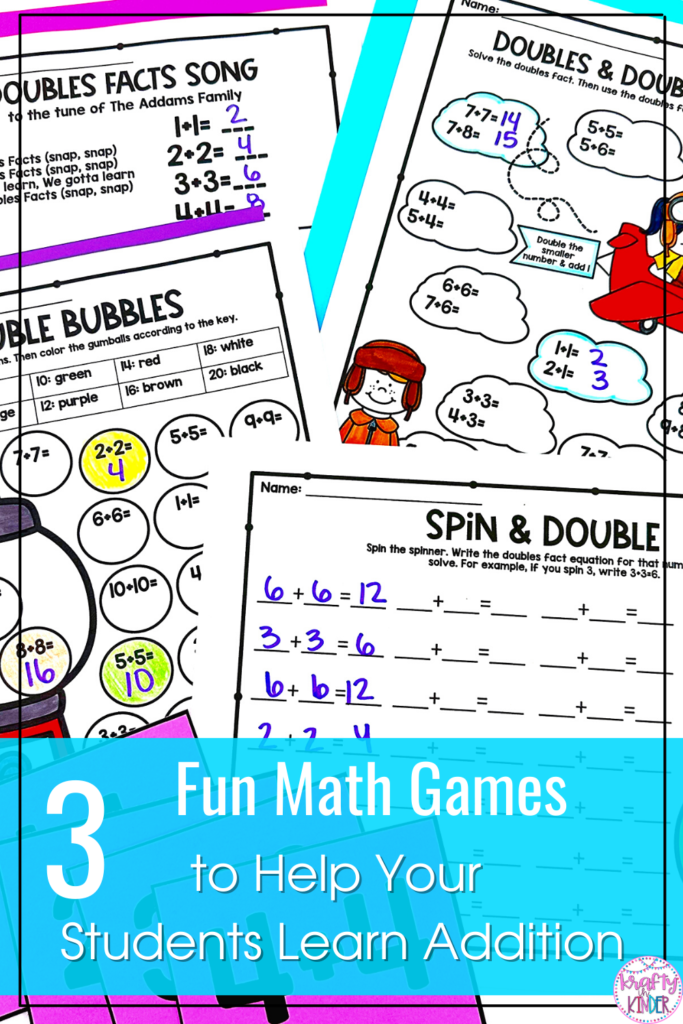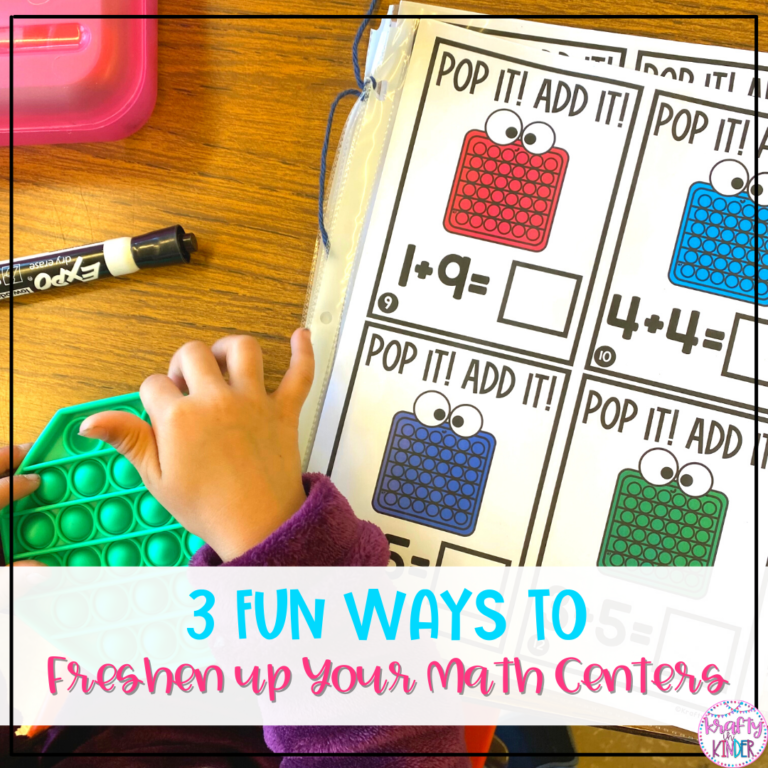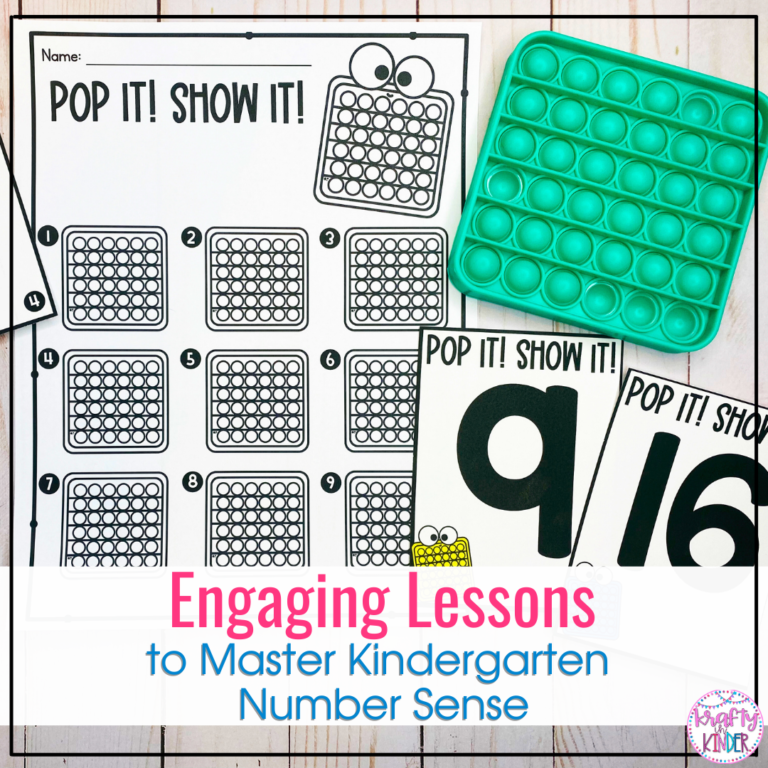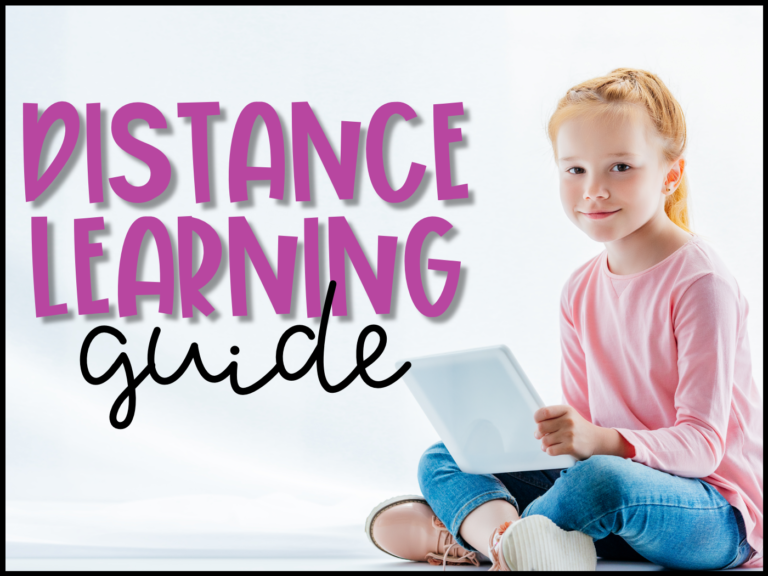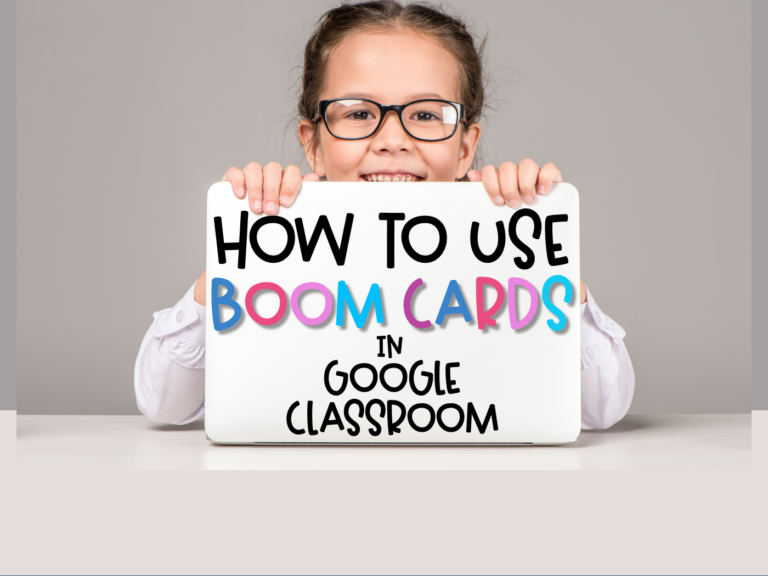Math Games Make Mastering Addition Easy in First Grade
If you teach in the primary classroom, you likely already know that learning games are your friend when teaching tricky topics! Anytime I use a game in our lessons, I know my students will be engaged and interested in the material. This is especially true when it comes to teaching addition! In kindergarten and first grade, we spend a lot of time on addition, so why not use math games to make learning more fun?!
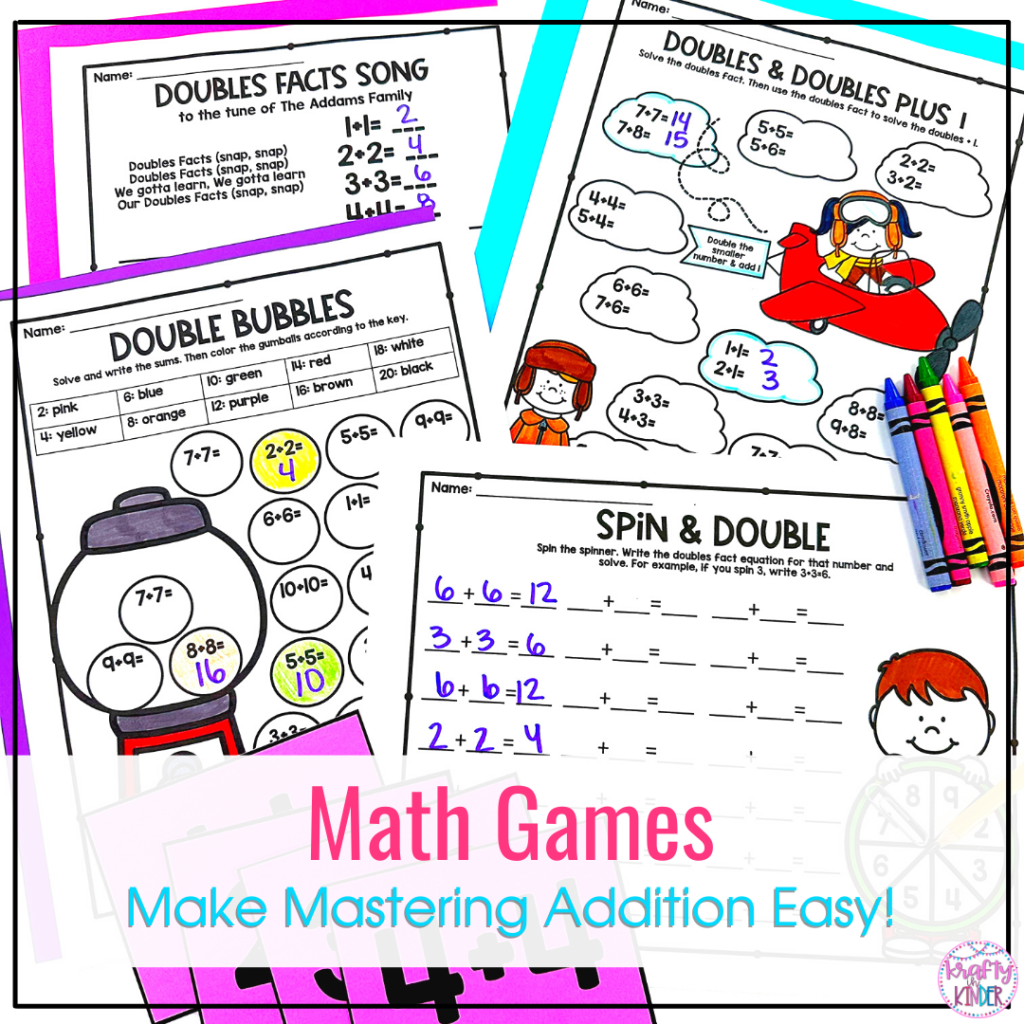
Choosing Math Games for Your Group
First things first! Let’s talk about choosing games that will work best for your kiddos. When selecting math games that will help your students learn addition, take some time to think about where they’re at.

Have you just started working with addition facts? Will these games be a review activity? Is it the beginning of the year or the end? These simple questions are great to keep in the back of your mind when planning some math games for your classroom.
Toward the beginning of the year, I like to choose super simple games to explain so my students can focus on the math. I also stray away from games that require adult interaction because I want to have versatility with our math games. For me, the ideal learning game can be used in small groups, whole group learning, centers, partner games, and independently. If a math game touches on all those criteria, it’s a win in my book!
Games that come to mind are digital activities like Boom Cards, simple center activities, and hands-on learning activities that I know my students will LOVE. Using a bit of variety in our math games is a great way to maintain interest and ensure that students will actually master those addition facts while using them too!
Differentiation with Math Games
Choosing games that are versatile and simple to explain also means I can make differentiation easy. For example, suppose I have kiddos that are a bit more advanced than others. In that case, assigning a different Boom Card deck without the whole room knowing what they’re working on is easy.
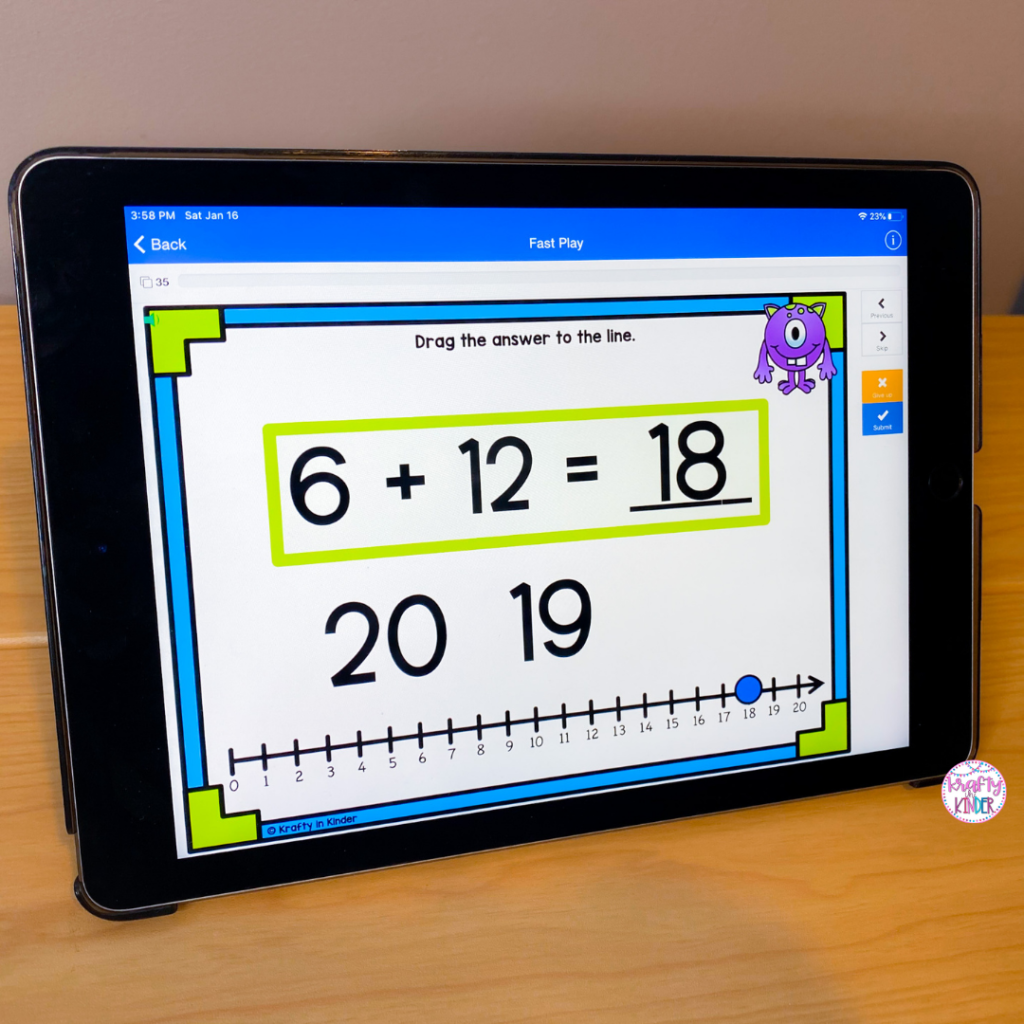
For example, before we split off into groups, I can explain the concept being targeted in the Boom Card center, but each student might be working on a different fact family depending on skill level.
I’m a fan of being able to differentiate discreetly since we all know the comparison game starts way too early!
The last thing I want is for my students to feel like they’re being given “easy” work while other students work on harder topics. Using math games that target a variety of skill levels is key.
Another way to differentiate math games discreetly is by introducing them in small groups just before you rotate to a new center. Then, students in the group play the game together in the next center rotation.
Ready to see my favorite math games for teaching addition to varied skill levels in my classroom? Here’s my top 3!
1. Pop-It Math Games
First up, let’s talk about a classroom favorite. If you’re unfamiliar with Pop-It Math Games, you’ll LOVE them! These math games target addition in a way that feels like play to students. The hands-on learning component of using a tactile Pop-It Fidget Toy is a great way to snag their attention and keep it through the duration of the activity as well.
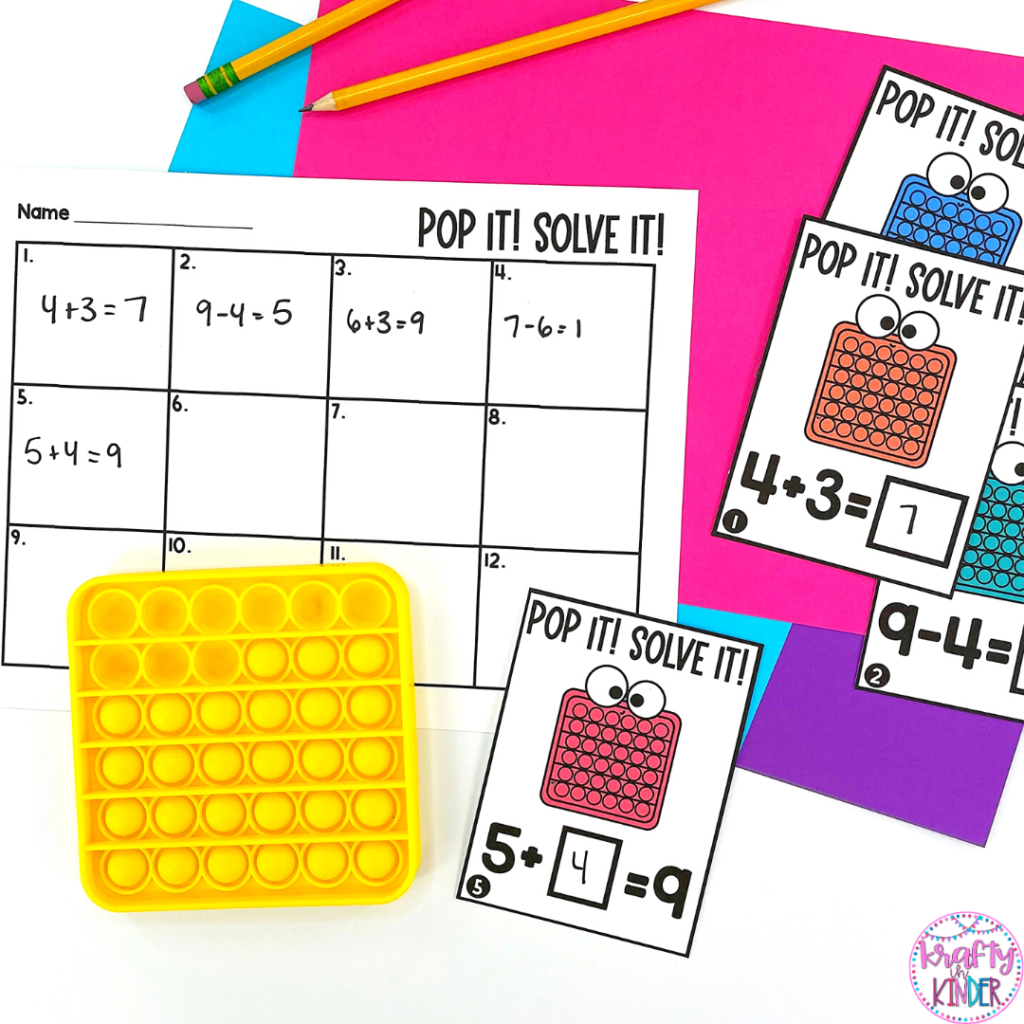
These games target addition and subtraction to 10 and 20, missing addends, and adding three numbers, making differentiation super simple. Explain the concept to your students, then hand off the recording sheet and task cards aligned to their skill level. Each student will be able to complete the activity at their “just right” level.
I love introducing this game during small groups and showing my kids how we use it. To play, students will draw a task card and solve it using the pop-it to help them.
For example, if the math problem is “4+3=x”, students would first “pop” 4 bubbles on the pop-it. Then they add 3 more bubbles. Finally, they count to get their total. They write the total on the task card with a dry-erase marker and use a recording sheet to write down the problem with the answer.
The visual aid of checking their work with the pop-it tool is a great way to cement those math facts in a fun way!
2. Doubles Facts Games
Next up, doubles facts! This topic can take a while for my students to really wrap their brains around for mastery, so we play our fair share of math games with doubles too.
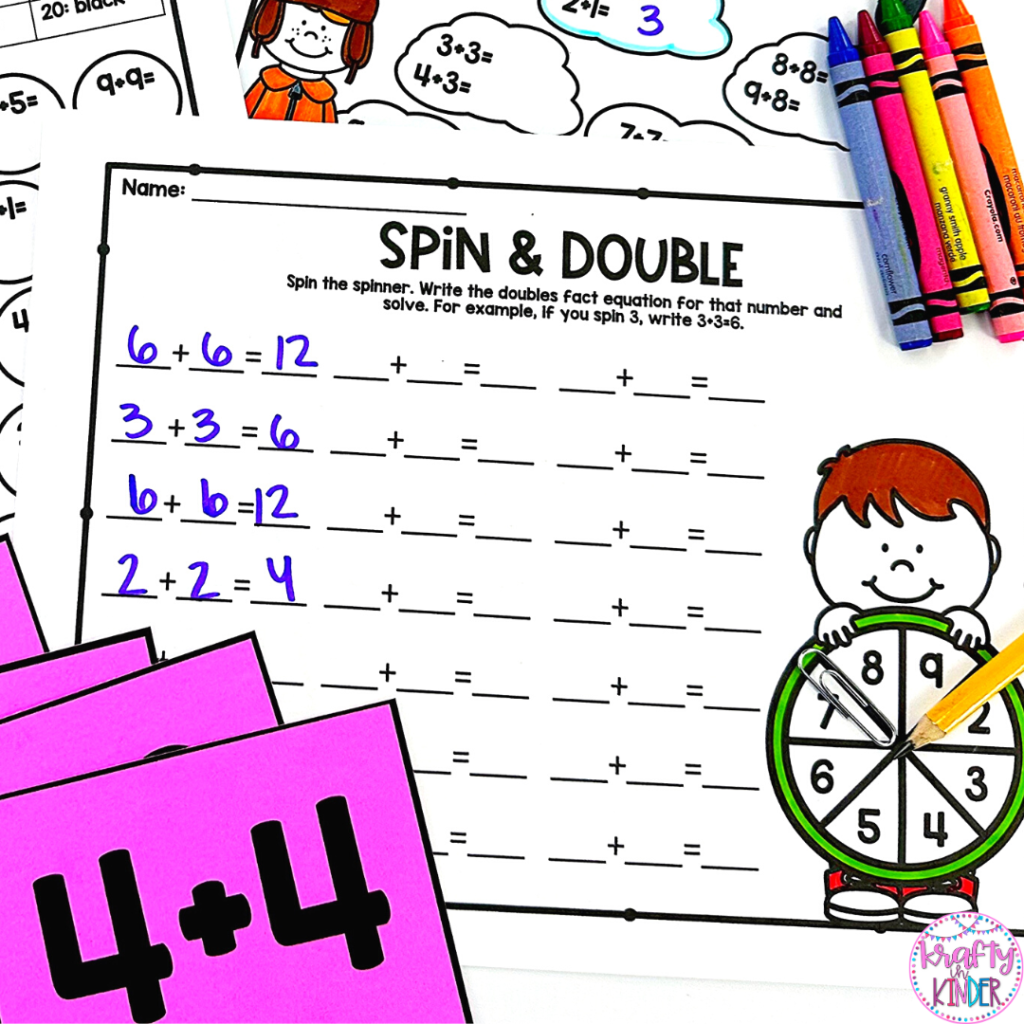
When it comes to targeting doubles, I love to use center games that can be played independently or with a partner. Since we work on this skill over and over, using a fun partner game is a great way to keep their attention as we practice!
This bundle of activities has a “Spin and Solve” game that’s just the ticket. Students will take turns spinning to create their own doubles facts. They solve, fill in their answer and then let their partner check. I love that this activity focuses on teamwork while targeting addition.
Another activity from this bundle we use for mastering doubles during center time is “Write the Room.” In this variation, students will walk around the room, solve the doubles fact (or doubles plus one fact), and fill in their answers on the recording sheet.
You can also set this up as a center game with all the task cards in a basket or baggie. Both of these math games are perfect for reviewing, or use them for targeted math intervention in your small groups!
3. Boom Card Math Games
Finally, my favorite, Boom Cards! It probably comes as no surprise to you that I LOVE Boom Card games. They are always a student favorite, require zero prep, and are perfect for differentiation. I love that students can be assigned Boom Card decks that align with their specific skill level and that I can track progress too! Some of the decks we use for mastering addition include:
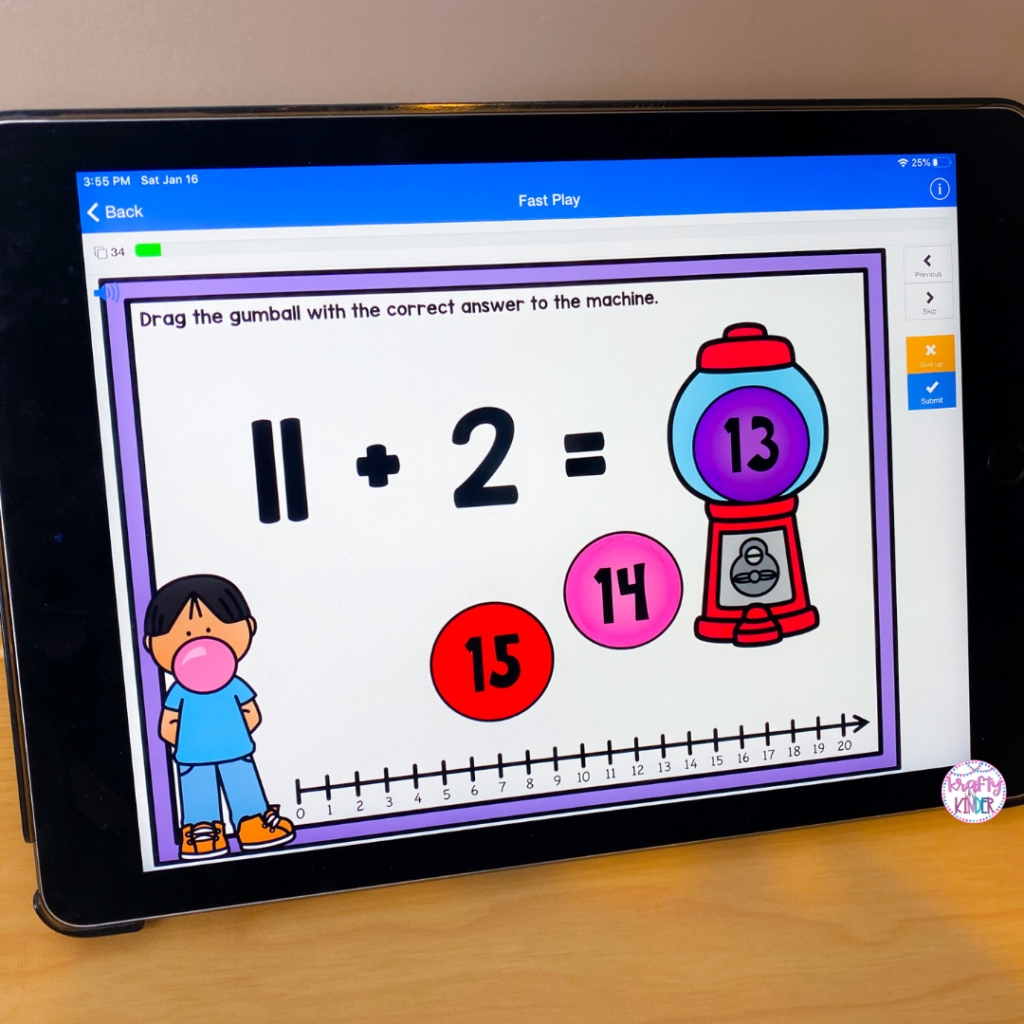
I love that these simple math games can be used for all of my students, no matter their skill level. We typically all start out with the deck within 5, and then as students progress, they can move up to more challenging decks. Students love these math games because they’re interactive and responsive, much like a video game. It never takes much coaxing to get them excited for Boom Card games!
These activities target addition through a variety of games that ask students to solve equations. There are audio directions included, making these great for independent technology centers. Students will listen to the directions, drag and drop pieces to count, and solve. These math games are self-checking, interactive, and randomized each time. We use these math games repeatedly in our classroom, and they make a great no-prep homework option too!
Grab a FREE Deck of Boom Math Games
Want to get started with Boom Card math games in your classroom? Fill in your information below to be sent a FREE deck of Boom Cards that focus on addition facts for numbers 1-10. You’ll love adding these simple math games to your weekly lesson plan, and your students will love using them!
The key to success in addition is making learning fun. Do this by choosing math games that are interactive, easy to differentiate, and exciting for students! Boom Cards check all the boxes and ensure your students will stay engaged in learning. Not to mention, we can all use another no-prep learning game, right?! Grab the freebie, and try these Boom Card math games in your room to see what I mean!
Save This Post
This post will come in handy when you’re planning math lessons for your students! Pin this post on Pinterest to come back to it when you’re in need of a little inspiration.
